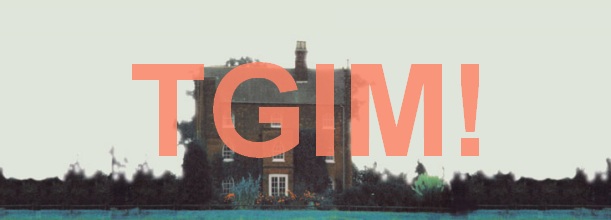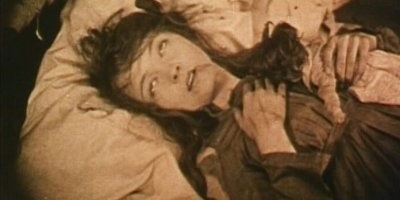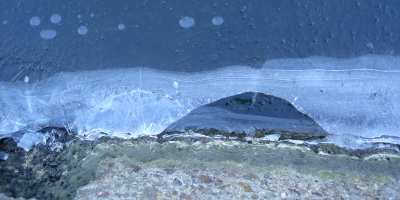TGIM! Swedenborg International Short Film Festival 2012

Swedenborg was an influential 18th century scientist, philosopher, theologian and purported Christian mystic. Publishing numerous works in his time, his experiences and theories resonated with artists and writers of far-reaching influence, including William Blake, WB Yeats and Carl Jung. The Swedenborg Society prints a large selection of his and related work, and since 2010 has hosted a short film festival, with a special interest in films of thematic relevance to his interest in ideas concerning Heaven and Hell, mysticism, belief and the self, amongst many others. Curated by Stephen McNeilly and Nora Foster, this year’s selection of shorts will be judged by Jeremy Millar and Gareth Evans. Millar is a tutor of art criticism at London’s Royal College of Art, while Evans is a curator and editor, having co-produced Grant Gee’s mesmerising visual essay Patience: After Sebald, released earlier this year.
This year’s shortlist sees a good showing from the UK, with four of the seven films in competition emerging from British-based artists. With a firm grounding in themes of decay, death and the spiritual afterlife, this year’s festival charts an eerie course, with films detailing bizarre and uncanny phenomena including EVP, supernatural obsessions of the Victorian era and a boy who rotted his own hand off. Weird and wonderful, the Swedenborg ISFF casts an eye towards the fringes of short filmmaking, engaging with subjects at once intensely real in their effect and remarkably dreamlike in their essence.

Edwin Rostron’s animated short Of Unknown Origin kicks off proceedings, taking as its inspiration the tape recordings of Raymond Cass, one of the UK’s foremost Electronic Voice Phenomena (EVP) researchers. Far from a look at some untold menace lurking at the heart of the mysterious abnormality, Of Unknown Origin overlays hypnotic animation rendered in watercolour and pencil with the voice of Cass talking about his work. The resulting effect is a trip into the unconscious that recalls some of David Lynch’s early animated work in its bewitchingly poetic tone.
[swfobj src=”http://vimeo.com/moogaloop.swf?clip_id=17882819&server=vimeo.com&color=00adef&fullscreen=1″ width=”400″ height=”225″]
Fin de Siécle is US artist Kathleen Quillian’s entry, exploring the Victorian preoccupation with the spiritual, mystical and superstitious aspects of death. Formed using cut-out animation and some hand-painted elements, Quillian’s experimental animation follows a collage of crystal balls, butterflies and magic rays. In an attempt to evoke the strangeness that inflicted so much turn-of-the-century writing with occultist tendencies, including the era’s longing to make contact with the dead, Fin de Siécle‘s surreal animation harks back to an age when emergent technologies made the fantastic truly seem within touching distance.

In a similar vein, Oliver Pietsch’s From Here To Eternity documents cinema’s obsession with crossing over. Creating a morbidly humourous montage, From Here To Eternity locates the immortality in a screen death. In presenting actors’ interpretations of the inevitable throughout the medium’s history, dying and living forever simultaneously occupy the space of a few frames. Pietsch isn’t interested in presenting a heavy-handed discourse on the nature of the eternal, instead weaving a dreamlike thread through film history. Asking his audience to find their own path through cinema’s spectacle of death, a dreamlike space envelops this uncritical journey through cinema’s endless depiction of the final act. From Here To Eternity looks like one of Swedenborg’s standout shorts, and definitely shouldn’t be missed.

The absurdist humour inherent to Pietsch’s cycle of expiration is alive and well with Erica Eyres’ The Hand in the Plastic Bag. Through a series of interviews with his teachers, Eyres’ relates the account of a high school student who deliberately rotted his hand off inside a plastic bag, sealed by an elastic band around his wrist. Exploring the extremes of human behaviour, Eyres’ interest in a seemingly pervasive desire to greet death colours every aspect of The Hand in the Plastic Bag, even as it deals with the story with appropriately mordant humour. Borrowing from the aesthetics of low-budget television, the result is a conflation of the uncanny and the recognisably mundane, disarming in its effect.
Ending the festival out of competition, Freeze Frame by Doffy Weir and Dave Draper looks particularly interesting. Transforming derelict industrial areas of East London into enigmatic, alien landscapes, photographer Weir has been cultivating a different side of decay for the past few years. Abstracting forms and shapes to create skewed perspectives on abandoned industrial rot, new worlds emerge as light and colour conspire to turn ruin into rapture.

Completing this year’s line-up are Paul Hage Boutros’s Gun, Bruno Ramos’s Factory and Toby Tatum’s The Subterraneans. Screening out of competition is judge Jeremy Millar’s The Writing of Stones, an attempt to literally mesmerise the audience with a visually hypnotic spell of sorts. You’ll have to go along to get a real sense of Swedenborg and his legacy, the society showcasing a remarkable relationship between these cherry-picked films and their festival’s fascinating patron. Thankfully the Swedenborg ISFF is open to the public, and free at that. Combining a genuinely intriguing genesis with a sharply curated shortlist, Swedenborg 2012 looks well worth a venture. With limited space, booking is essential. So hop over to the festival site and ensure you don’t miss out.





Recent Comments